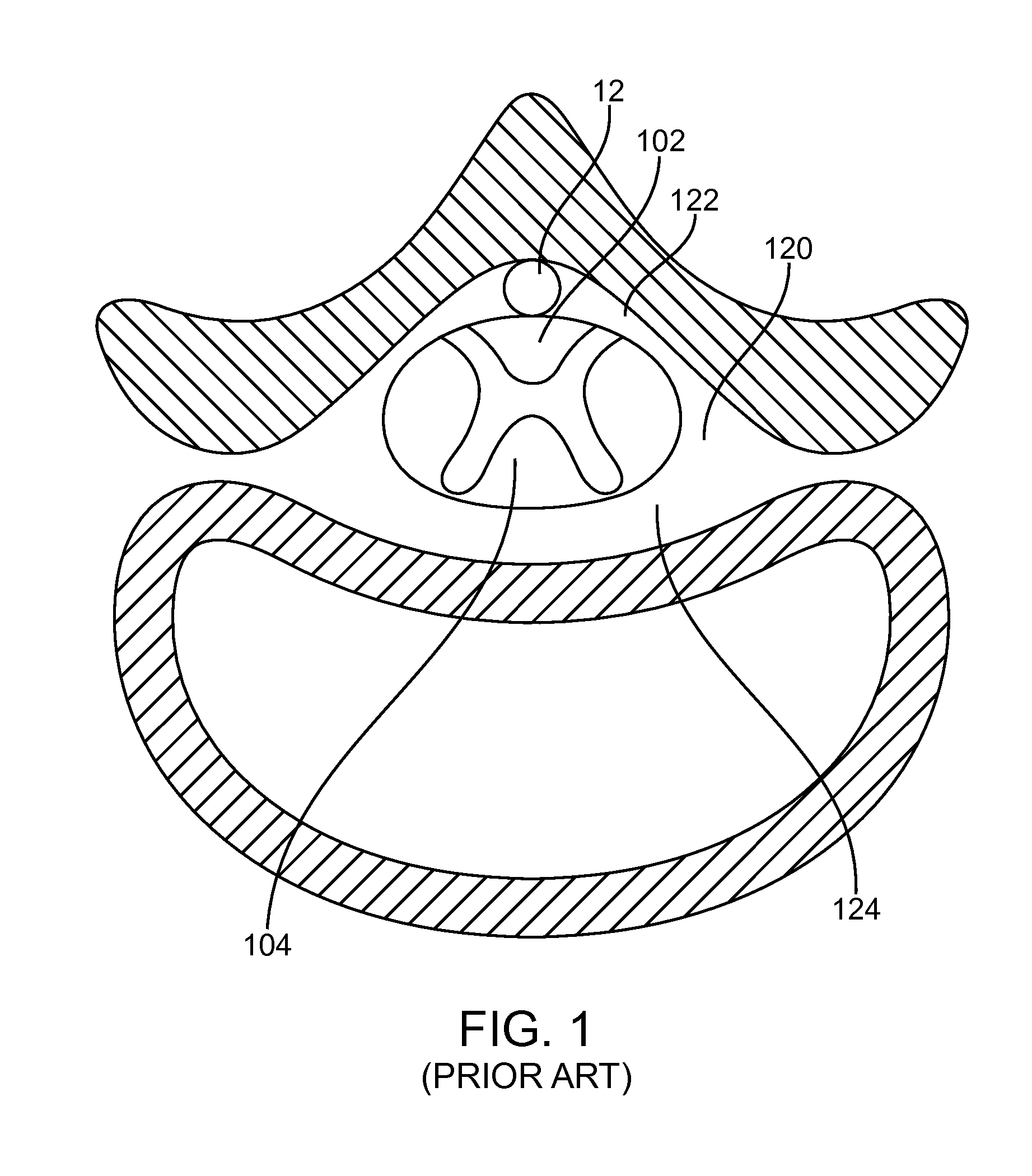System and method for spinal cord stimulation to treat motor disorders
a technology of spinal cord stimulation and motor disorders, applied in the direction of spinal electrodes, internal electrodes, therapy, etc., can solve the problems of inability to effectively treat motor disorders, inability to use dorsal column stimulation for treating symptoms of motor disorders, and inability to meet the needs of patients, etc., to achieve the effect of inhibiting nerve impulses
- Summary
- Abstract
- Description
- Claims
- Application Information
AI Technical Summary
Benefits of technology
Problems solved by technology
Method used
Image
Examples
Embodiment Construction
[0024]Turning first to FIG. 2, an exemplary SCS system 10 generally includes one or more (in this case, two) implantable stimulation leads 12, an implantable pulse source (IPG) 14, an external remote controller RC 16, a clinician's programmer (CP) 18, an External Trial Stimulator (ETS) 20, and an external charger 22.
[0025]The IPG 14 is physically connected via one or more percutaneous lead extensions 24 to the stimulation leads 12, which carry a plurality of electrodes 26 arranged in an array. As will be described in further detail below, the IPG 14 includes pulse generation circuitry that delivers electrical stimulation energy in the form of a pulsed electrical waveform (i.e., a temporal series of electrical pulses) to the electrode array 26 in accordance with a set of stimulation parameters.
[0026]The ETS 20 may also be physically connected via the percutaneous lead extensions 28 and external cable 30 to the stimulation leads 12. The ETS 20, which has pulse generation circuitry sim...
PUM
 Login to View More
Login to View More Abstract
Description
Claims
Application Information
 Login to View More
Login to View More - R&D
- Intellectual Property
- Life Sciences
- Materials
- Tech Scout
- Unparalleled Data Quality
- Higher Quality Content
- 60% Fewer Hallucinations
Browse by: Latest US Patents, China's latest patents, Technical Efficacy Thesaurus, Application Domain, Technology Topic, Popular Technical Reports.
© 2025 PatSnap. All rights reserved.Legal|Privacy policy|Modern Slavery Act Transparency Statement|Sitemap|About US| Contact US: help@patsnap.com



